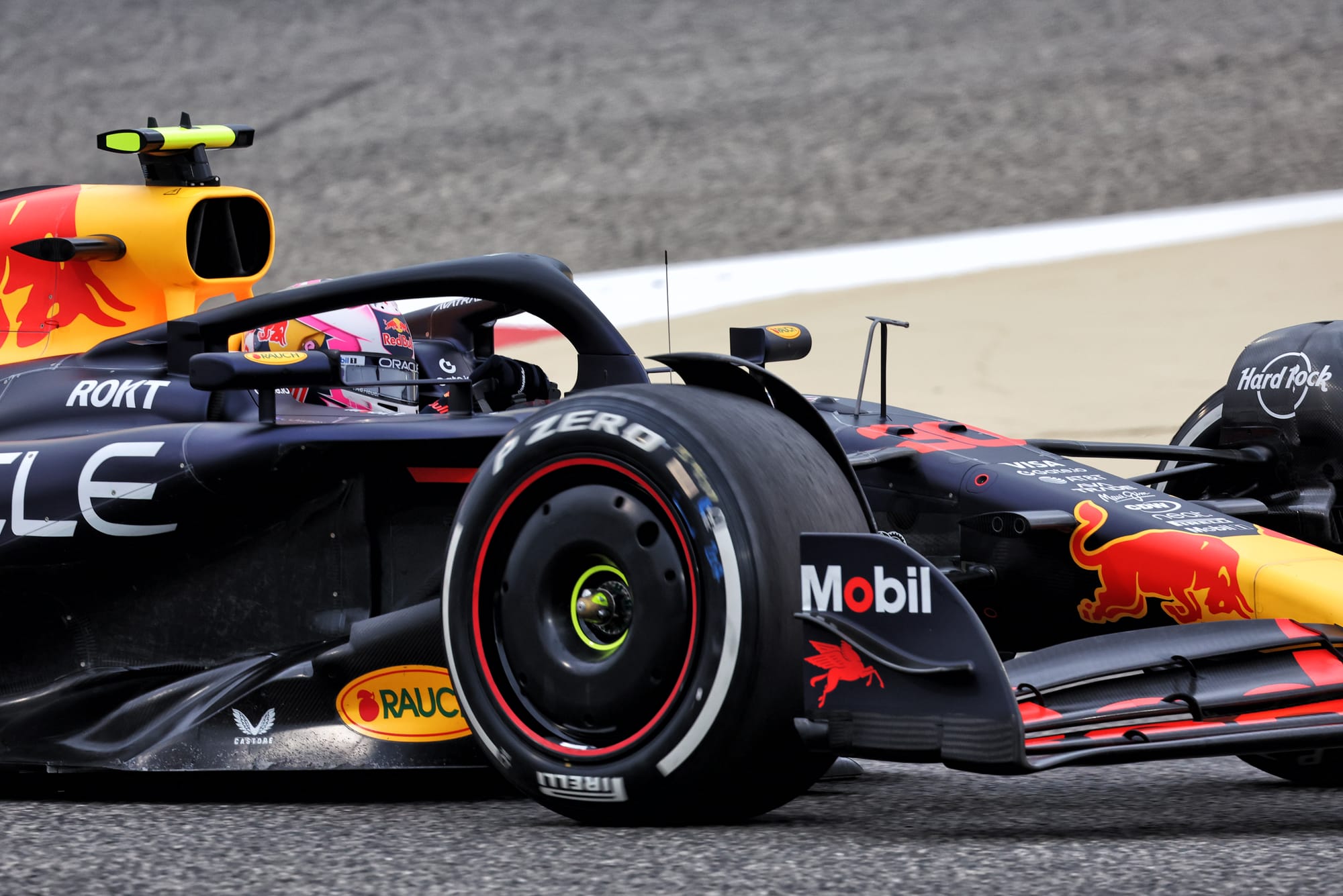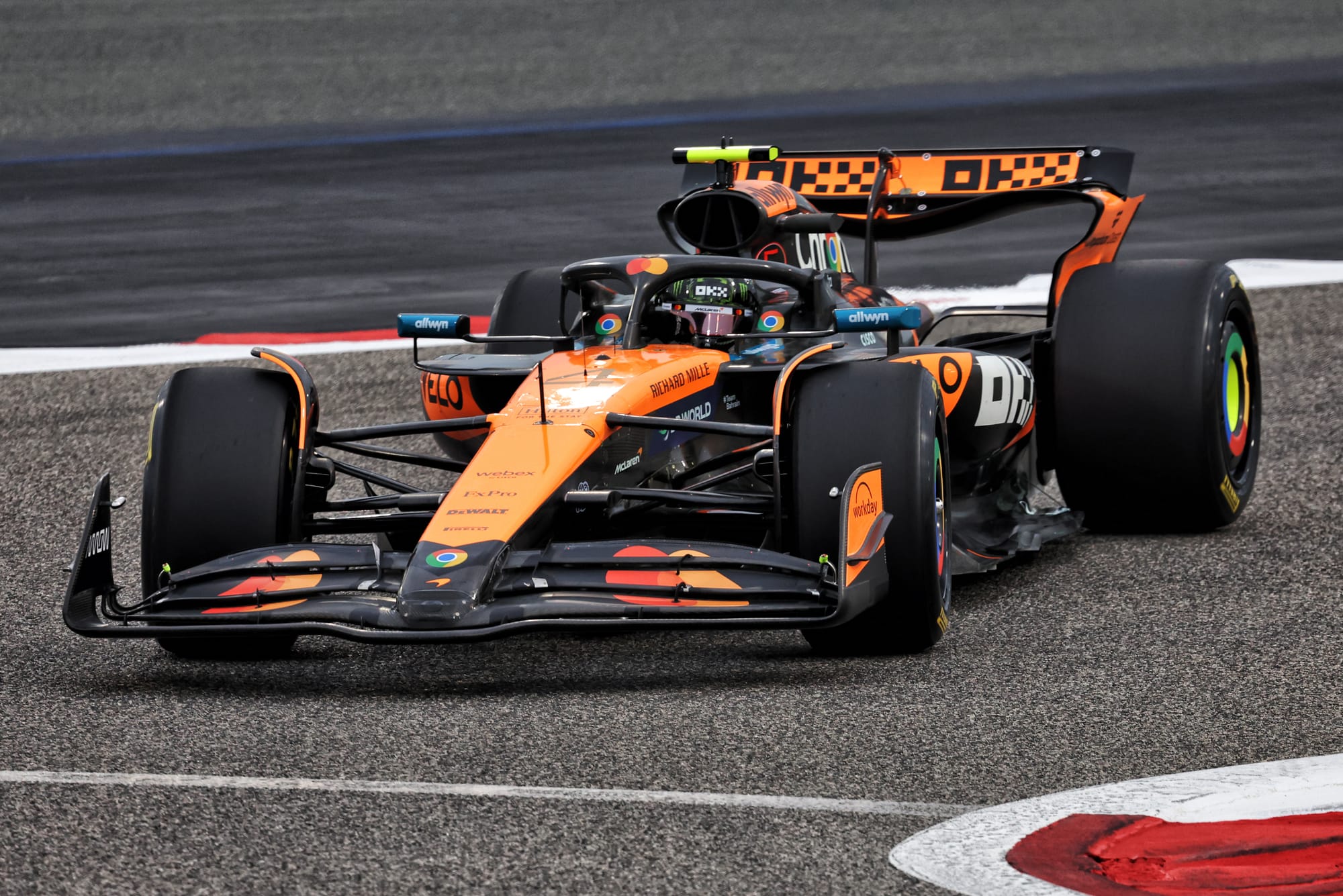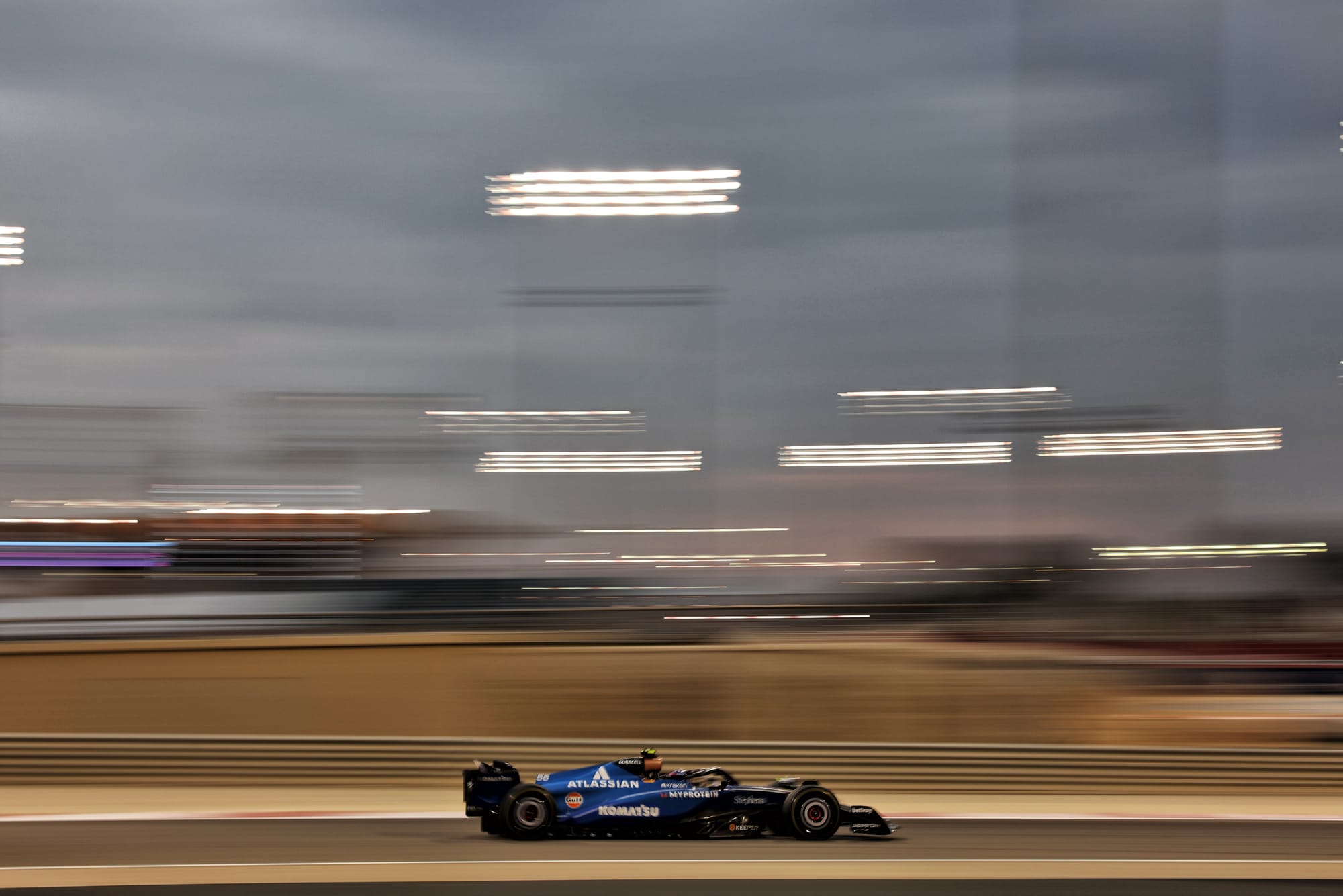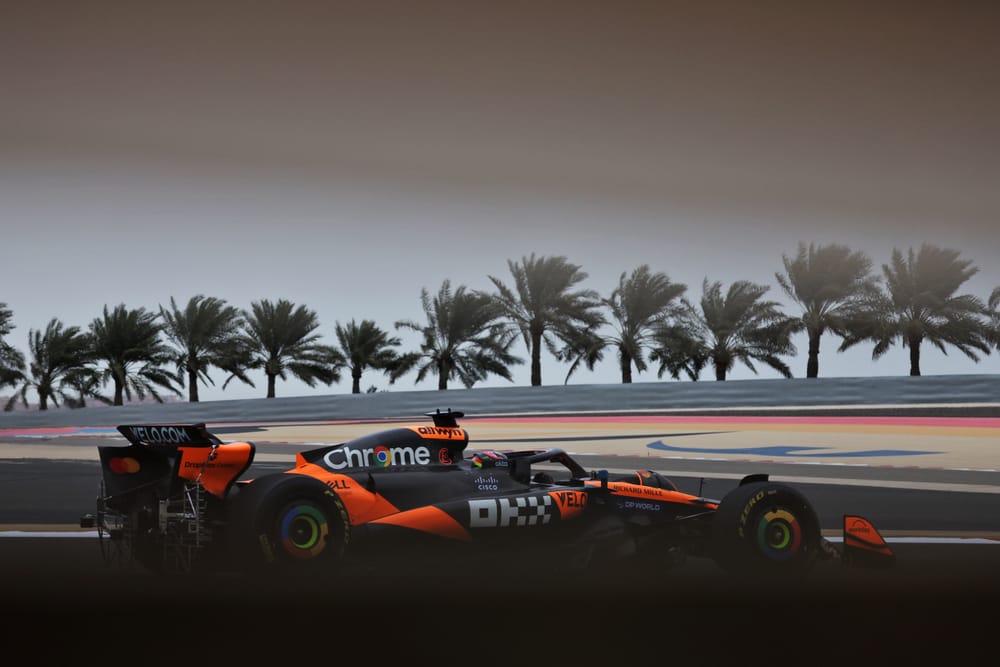The competitive shape of the coming season became more distinct on the second day of Formula 1 pre-season testing around the chilly (and occasionally damp) Bahrain circuit.
There were still several teams not at the stage of going for serious performance runs – and Red Bull’s running was interrupted by a serious loss of track time to a water pressure issue for Liam Lawson (Max Verstappen wasn’t in the car today).

However, McLaren, Ferrari and Mercedes all did a serious race simulation in the afternoon, giving us as close to a direct comparison we could hope for.
The numbers around that little match-up suggest much the same thing as yesterday’s Lando Norris session-heading lap: McLaren appears to have a small but significant advantage over Ferrari and Mercedes. Their two-stop simulation runs were comprised as follows:
| Stint | Norris (McLaren) | Leclerc (Ferrari) | Antonelli (Mercedes) |
|---|---|---|---|
| 1st stint | 17 laps (C3) | 15 laps (C3) | 19 laps (C3) |
| 2nd stint | 16 laps (C1) | 16 laps (C2) | 13 laps (C2) |
| 3rd stint | 18 laps (C2) | 20 laps (C1) | 19 laps (C1) |
The laptime averages for each stint were:
| Team | Stint 1 | Stint 2 | Stint 3 |
|---|---|---|---|
| McLaren | 1m 35.5s | 1m 34.4s | 1m 32.9s |
| Ferrari | 1m 35.9s | 1m 34.8s | 1m 34.2s |
| Mercedes | 1m 35.9s | 1m 34.7s | 1m 34.0s |
On this simulated 51-lap race of pure pace McLaren wins it by a massive 31 seconds ahead of Ferrari, with the Mercedes a further 2s behind the Ferrari.
But we should be careful about jumping to conclusions. The three teams each used different tyre compound sequences through the ‘stints’ (see above). Did McLaren somehow find the ideal combination for the particular track conditions with its C2/C1/C2 combination? It’s the final stint where Norris finds most of his advantage averaging a full 1s or more faster than the Ferrari and Mercedes.
What we are seeing here may just be a tyre compound difference. There’s the further complication of having no representative Red Bull comparison. But the final stint speed advantage of the McLaren is exceptional. Might he have been running a more aggressive mode in those final 18 laps?
Taking a look at the telemetry of his final lap in the middle stint and that of his final stint suggests this might indeed be the case. At the end of the pit straight he is 10km/h faster on his final stint than his middle one. On the run to Turn 4 he is at 291km/h compared to his previous 286.

There's never been a better time to join The Race Members' Club on Patreon - where you can get early access to many of Mark's columns for The Race plus the chance to ask him questions on ad-free episodes of The Race F1 Podcast. Sign up now and get 90% off your first month.
But even if we take that final stint out of the equation as unrepresentative (the Ferrari and Merc straightline performance is consistent between stints), Norris is also 0.4s faster than either in stint 1 (when they were all on the same compound) and 0.2s faster in stint 2 (when on a harder compound).
The fact that McLaren chose not to even chase single lap headline times and spent much more time working through spec and set-up experiments suggests a level of confidence in its car.
It’s impossible to be definitive, but the clues are pointing to a McLaren advantage. Not only in the long run times but also how Norris almost casually set the best middle sector time of all as he was making an incomplete lap doing pitstop practice.

Williams was the first team to really do some serious performance running in terms of fuel and power unit settings, so as to give Carlos Sainz (who will not drive the car again until Melbourne) a better feeling for the FW47. Impressively, he set the fastest single lap of the test so far, eclipsing the Ferrari times of Lewis Hamilton (who drove in the morning) and Leclerc.
But Williams didn’t do a comparable race simulation run to McLaren, Ferrari and Mercedes, instead doing a series of eight and 10 lap runs. But, just like yesterday, Williams looked the best prepared and fastest of the teams outside the top four, with Alpine not far behind.
The others are in various stages of works in progress, and more clarity should emerge tomorrow.



